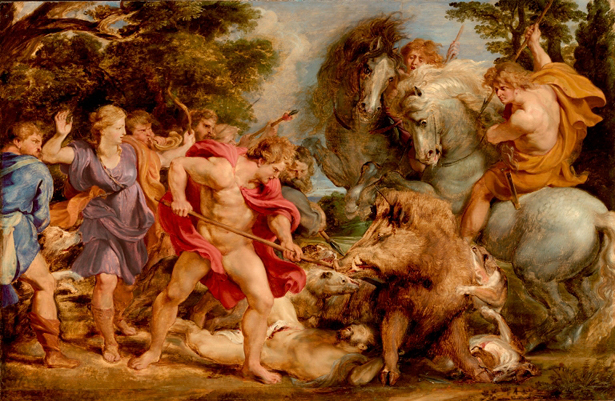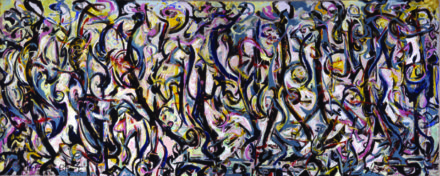Horses have been the subject of paintings, sculptures, drawings, and other renderings for thousands of years. They have been depicted as companions of man, within picturesque landscapes, and in dynamic races, chases, and battles. Anne Woollett, curator of paintings at the J. Paul Getty Museum and horse enthusiast, spoke with me about horses in advance of her June 10 talk The Four-Legged Muse: Horses in Painting, 1500–1770.
What is it about our relationship with horses that makes them the subject of so many works of art?
Artists have been drawn to horses for the challenges of representing complex figures in space and in motion. They have also been drawn to the challenge of articulating the character of the equine subject and that of his human companions—such as nobility of spirit, virtue, fortitude, or companionship, for example. A few artists were intently interested in capturing something insightful about horses that went beyond, or was outside of, the long tradition of equestrian subjects representing status and authority.
Share an example of a horse painting that goes beyond the traditional equestrian portrait.

Horse Stable, Gerard ter Borch, about 1652–54, Oil on panel, 17 13/16 x 21 1/16 in. The J. Paul Getty Museum
In a treatment that was highly unusual for the seventeenth century, the Dutch painter Gerard ter Borch portrayed a beautifully groomed gray stallion inside a barn. Both the horse and the presumed owner, who wears his comfortable indoor shoes while brushing down his mount, are partially obscured. The scene is neither strictly a portrait nor a genre scene, but is instead a complex and sensitive evocation of the relationship between a man and his prized horse.
Which notable paintings of horses are currently in the Getty Museum’s collection?
There are many! Going in chronological order, here are some favorites:
• The Meeting of the Three Kings with David and Isaiah, Master of the St. Bartholomew Altarpiece, before 1480
• An Allegory of Passion, Hans Holbein the Younger, about 1532-36
• The Calydonian Boar Hunt, Peter Paul Rubens, about 1611-12
• The “Piebald” Horse, Paulus Potter, 1650-54
• The Horse Stable, Gerard ter Borch, 1652-54
• Brood Mares and Foals, George Stubbs, 1767 (currently on loan)
• The Race of the Riderless Horses, Théodore Géricault, 1817
• Diomedes Devoured by Horses, Gustave Moreau, 1866
In your opinion, which artist was the master of painting horses?
Peter Paul Rubens was one of the most exciting painters of horses. He used them in many different ways: as carefully rendered subjects, to convey intensely physical aspects of themes, and to express ineffable qualities, such as primal fear and boundless joy.

The Calydonian Boar Hunt, Peter Paul Rubens, about 1611–12, Oil on panel, 23 1/4 x 35 1/2 in. The J. Paul Getty Museum
As an expert horseman, Rubens was very well informed about horse anatomy, but he wasn’t finicky or overly precise when painting horses, and he enjoyed the challenge of depicting them from different angles and in unusual positions—even upside down.
Are horses more difficult to render than other animals?
Perhaps, in part because they were so central to daily life in the late medieval through early modern period and were extremely familiar to viewers and connoisseurs alert to correct proportion and specific attributes. Painters competed with one another and with artists working in other media, particularly sculpture, to render the physical characteristics and nature of horses and to demonstrate their mastery of specific gaits (trotting, galloping, or executing maneuvers from haute “école equitation). Yet horses also offered tremendous scope for artistic license.
Are there any interesting anecdotes about an artist and his or her horse you’d like to share?
As a young man in 1608, hastening back home to Antwerp from the Court in Mantua upon hearing his mother was gravely ill, Rubens rapidly signed a letter “leaping into the saddle!” (“Salendo a cavallo!”).
What’s your favorite breed of horse?
Every one!




During my last visit to the Getty, I remember seeing “An Allegory of Passion” by Holbein and reading in the caption that the quotation in the painting read, “And so my passion carries me along.” The passionate horse was being used to convey human passion. In those days, horses were the primary means of transportation, so people would have more naturally perceived their allegorical meaning. In our age, they have been replaced by machines, so their allegorical value has diminished.
Thank you for allowing me to download a copy of “The Piebald Horse” for my personal use. It is very generous of the Museum and most appreciated.